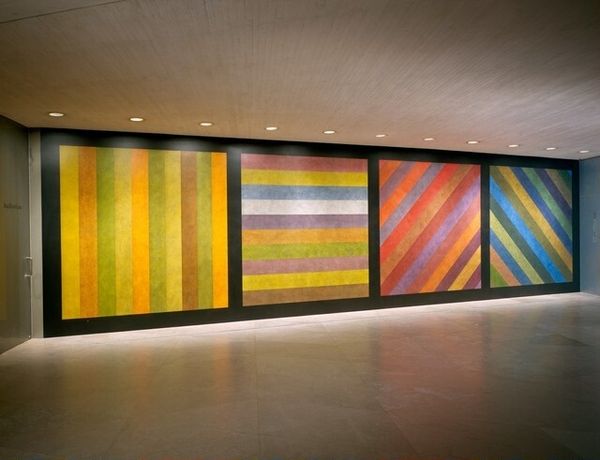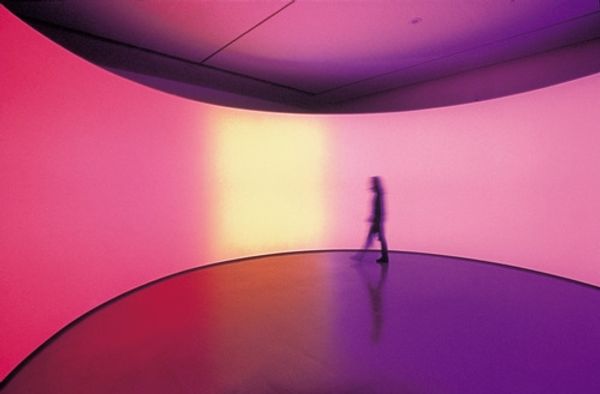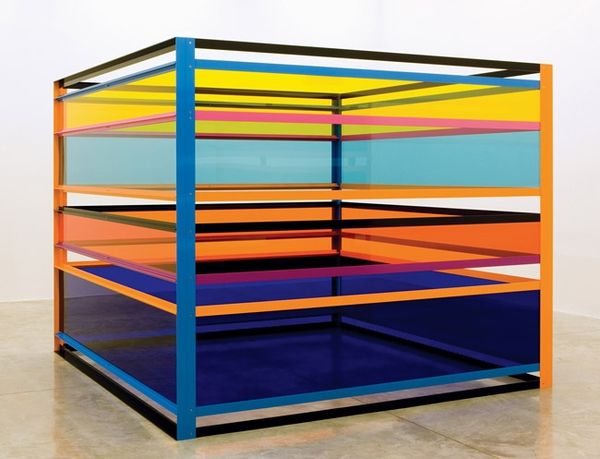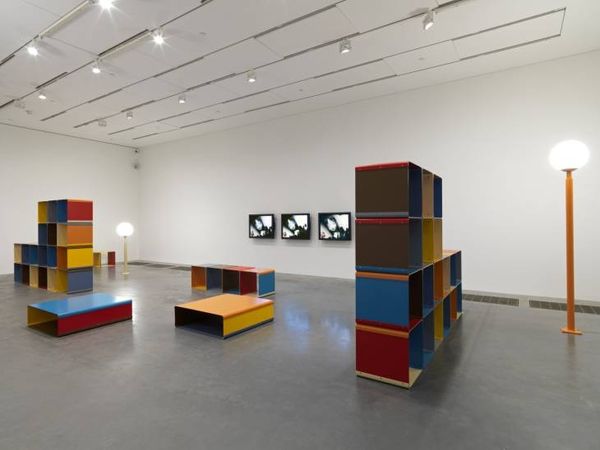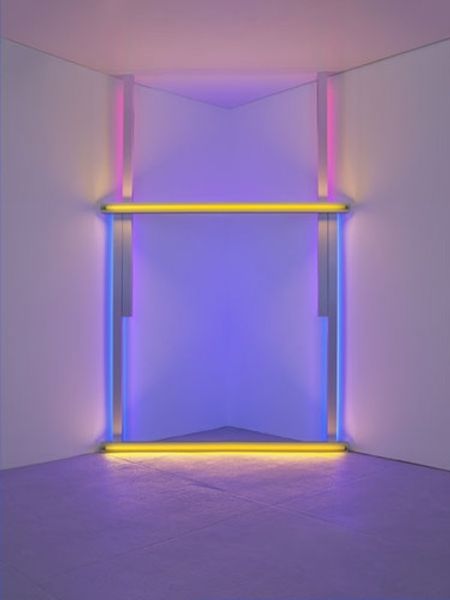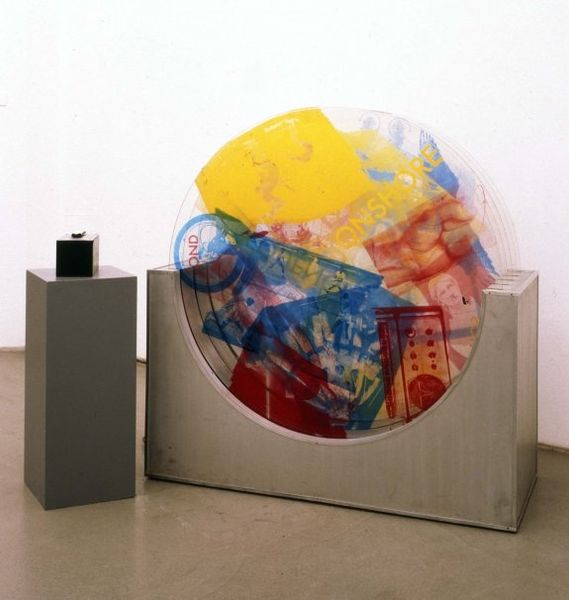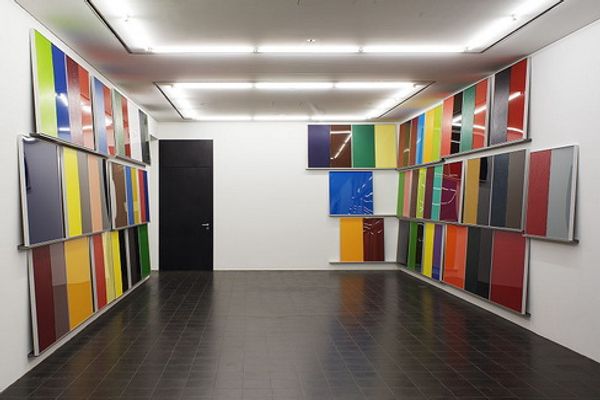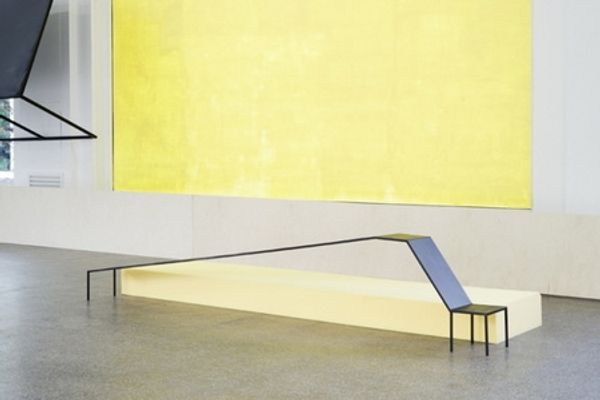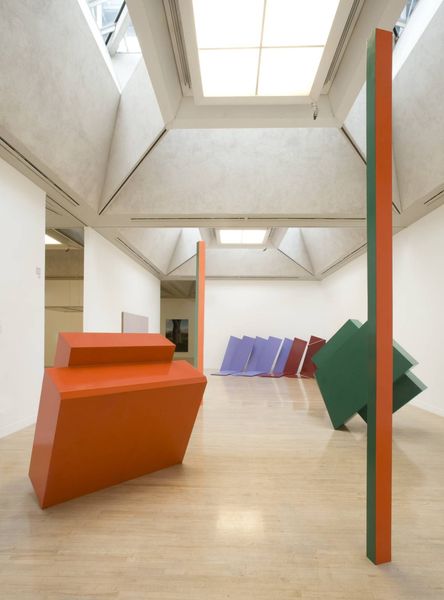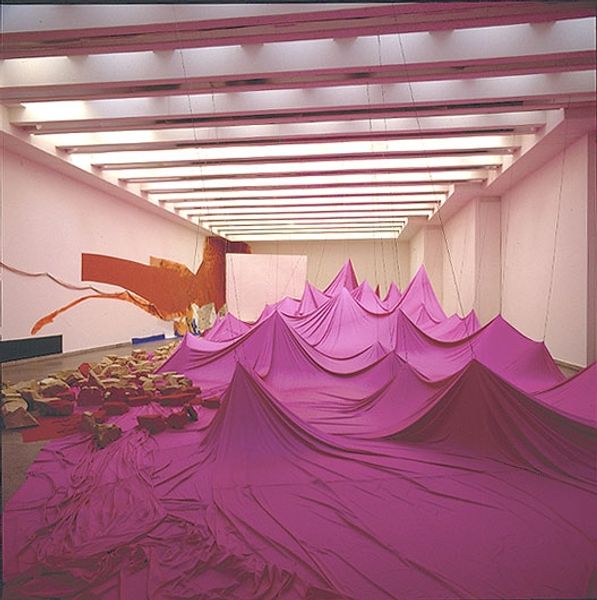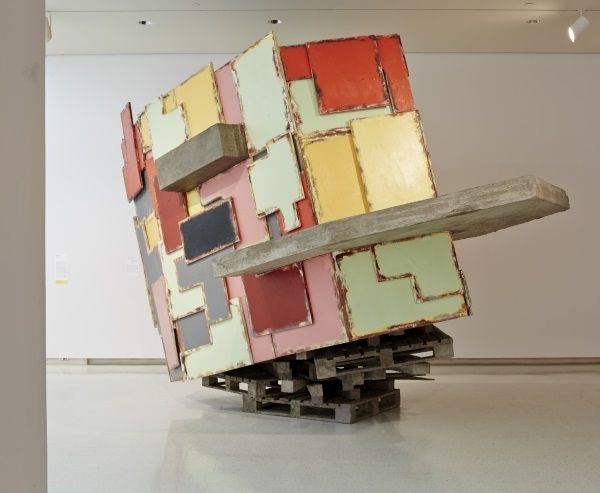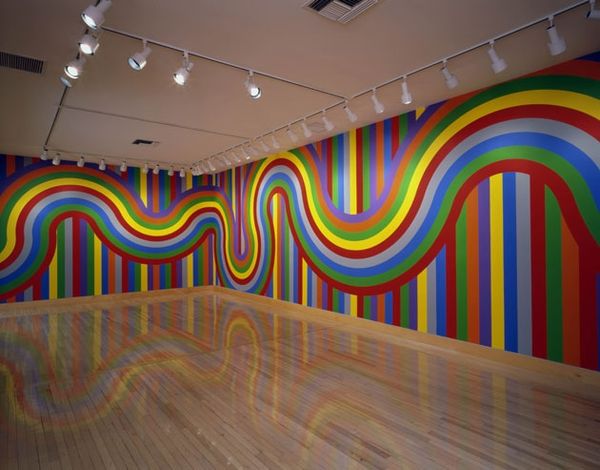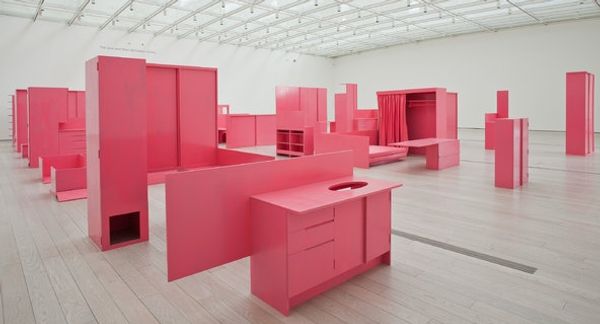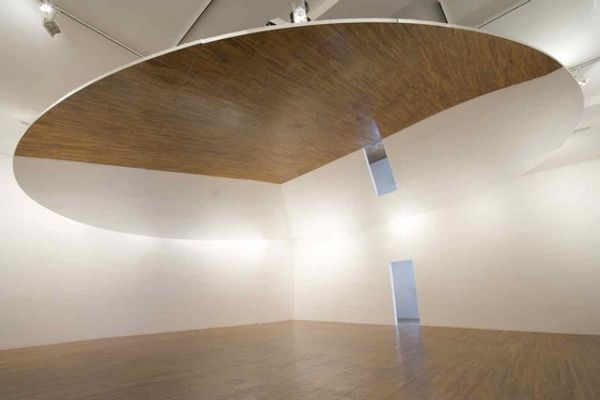
Vortex in the Play of Theatre with Real Passion: In Memory of Kay Stockholder 2000
0:00
0:00
Copyright: Jessica Stockholder,Fair Use
Curator: Looking at Jessica Stockholder’s large-scale mixed media installation, created in 2000 and titled “Vortex in the Play of Theatre with Real Passion: In Memory of Kay Stockholder,” I’m immediately struck by how boldly it disrupts the gallery's usual calm. Editor: Absolutely! The playful use of color and materials—like stacked shipping containers and swathes of painted fabric—creates an almost carnival-like atmosphere, jarring against the refined architectural setting. Curator: Stockholder’s work is really about challenging our understanding of space and form. She appropriates everyday objects, often mass-produced, and uses them to construct these vibrant, immersive environments. It's a deliberate move against traditional sculptural conventions. We have to consider this piece as a powerful critique of consumerism. Editor: Right, it's a Postmodernist commentary on how consumer goods can be recontextualized and repurposed. But beyond that, the "Vortex" part of the title hints at something deeper. Is there a sense of the destabilization that loss can bring, remembering Kay Stockholder. Curator: I agree, and that reading is quite consistent. The piece becomes a memorial of sorts. The chaotic arrangement might echo the disruption grief causes to conventional structure, social interaction, familial connection, as the passion of emotion intersects with the theatre of everyday performance. Editor: It makes you wonder about the role of art institutions, doesn’t it? Housing such disruptive works; turning potentially anarchic energies into something museum visitors safely interact with and depart. Curator: Exactly. There’s an inherent tension between the rebellious nature of Stockholder's art and the institutional context it now inhabits. The containers, suggestive of global trade and movement, are now still, framed by white walls and architectural decorum. Editor: Reflecting upon the title once more, it’s hard not to interpret how the theatrical setting of the museum transforms and subsumes an individual experience with loss and emotion into the public sphere. The title and composition together really draw attention to the way art serves a political role for society as a whole. Curator: I concur! It has been incredibly illuminating to discuss this. Hopefully, listeners come away from it also having new questions about its role.
Comments
No comments
Be the first to comment and join the conversation on the ultimate creative platform.
